The Medieval Period dates back to European history’s 5th to late 15th century. Vikings belonged to the same era and were profound as pirates, raiders, and colonizers.
The Viking age began during the 9th and ideally ended around the 11 th century when the Norsemen traumatized Europe and North America.
The natives of Scandinavia carried diverse genes from Southern Europe and Asia.
“Pirates” as per early Scandinavian language, Vikings were seafaring robbers. They stole gold, silver, cargo, food, and other necessities.
Eric Bloodaxe, Leif Erikson, and Ragnar Lothbrok were famous pirates of middle age.
The men had well-groomed hair and beards, while the women had long hair and prominent brow ridges. They typically belonged to the blonde Scandinavian race.
Primarily farmers, Norsemen reared cattle, plowed fields, and caught fish by the sea for a living. Salt trading was a vital trading commodity.
Gradually, they ceased raids, so the Viking age marked its end.
Why did the Vikings invade England in 793?
Content
The first Viking attack on England was recorded in 793 A.D in a monastery located on Lindisfarne island. The invasion was based on the riches inside monasteries’ treasuries accumulated throughout numerous religious rites.
Lindisfarne, a coastal region, was an easy target for the Vikings, who were too good at water navigation and had essential skills for marine survival. The invasion was so terrifying that people believed GodGodd punished Lindisfarne for their sins.
Some reasons for the Viking invasion of England are listed below:
Were there any female Viking warriors?
Yes, several female Viking warriors were known as “Shield Maiden ”. Freydis Eiríksdóttir was the most popular female Viking.
Did Vikings make human sacrifices?
Odin, the Viking god, demanded human sacrifices, so Vikings made them for good luck.
How long did the Vikings rule England?
The Vikings ruled over England from 800-1066 A.D.
What did Vikings call England?
The Vikings reached England’s “Albion.”
Where did Vikings disappear?
The Vikings did not disappear anywhere; instead, they continued their lives in Scandinavia, but the Viking age ended after raiding.
10. Acquisition of wealth

The Heathen were found to have settled in England around 860A.D after their first successful raid on 793A.D, per the Anglo-Saxon Chronicle.
Much prosperous England, known for its remunerative trade, was Viking’s initial target. Medieval England was well-off as it had around 400 dollars, equivalent average per capita income.
Monasteries were the wealthiest at the time that monks managed. As a symbol of extreme holiness, the monks were paid off tithes by each family annually.
Monasteries dominated Churches; hence, money collected through baptism, death, marital rituals, and donations went into their treasuries.
In addition to it, grants were made by those who sought salvation.
Around 500 monasteries covered enormous monastic lands whose primary purpose was to aid sick travelers and protect and promote religion.
It stood as the major attraction of England. Thus, lured by England’s affluent monasteries, Vikings attacked them.
Lindisfarne was the primary monastery that got robbed as the monks and nuns residing in abbeys believed in non-violence. They were also not permitted to use weapons inside Churches.
Hence, Vikings had easier targets to rob gold, silver, and everything under the Church’s possession, killing and enslaving monks.
9. Easier target in reach of the sea
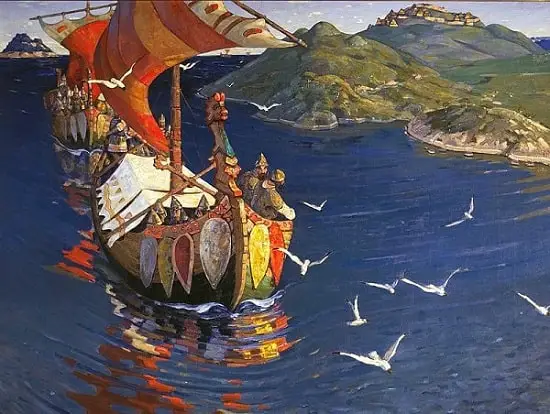
The Vikings traveled by waterways as they had excelled in building and sailing ships. They also worked well to manage their large ships on long voyages.
Although magnetic compasses were not invented then, Vikings studied the sun, moon, and stars for sea navigation.
They learned about mental chart landmarks and developed a sun compass to navigate geographical directions.
England was topographically low in elevation, lying between the North Sea, North Atlantic Ocean, and English channel.
It used seaways to trade wine, clothes, and other goods.
The homeland of Vikings; was Scandinavia, where Sweden, Denmark, and Norway stand today, and England were connected by the North sea. It took around 3-6 days to reach England under favorable conditions through the North sea lane.
The Vikings, known for their outstanding sailing skills, could easily invade England; hence it stood as a serene victory.
Thus, they first attacked Lindisfarne, located west of the North sea, in June when the sea remained calm.
8. In search of better lands
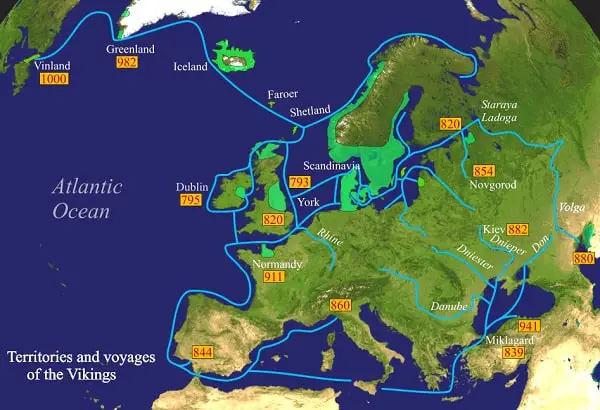
The Vikings were skilled warriors and good farmers as well. They owned small farms and planted food crops and cash crops when not on voyages.
Above 90 percent of people were involved in agriculture in Viking communities. They grew barley, oats, and rye into flour for storage.
They also reared cattle like pigs, horses, hens, and geese and built gardens filled with seasonal vegetables.
Meat, cereals, fish, vegetables, fruits, and dairy products were the major productions in the era. They used iron spades, and iron picks for cultivation and crop harvestation.
But with the rapid population growth, small farms were insufficient to produce enough crops. They required suitable land and favorable climatic conditions to expand agriculture to survive.
England had lighter, more prosperous, and fertile soil suitable for agriculture.
It had warm temperatures during the middle ages that increased crop yield. It majorly produced barley, wheat, rye, etc.
Thus, in search of better places for existence, the Normans found England perfectly fine for invasion and settlement.
7. Odin-inspired wars
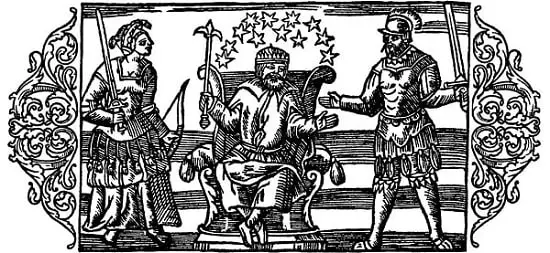
The Norsemen followed the Old Norse religion as ancient polytheistic scriptures.
They worshiped multiple Norse gods and goddesses, namely Odin, Thor, Frigg, Idun, etc. However, the Vikings believed in “Astro,”; a practice to worship Norse gods, and did not have a specific name of religion.
Odin was the most worshiped Norse god of battles and wars. He was portrayed as a tall older man, carrying spears and cloaked. He had a flowing beard and gave one of his eyes for wisdom.
The chief god, the Heathen, Odin, inspired them to conquer their battles brave, courageous, and knowledgeable.
He was known for impeccable physical strength along with regenerative powers. Hence, any Viking who fought their battles fearlessly would be taken to Valhalla.
Valkyries, the fairies, would transcend them to Valhalla, where they would reside peacefully by Odin’s side.
Berserkers were an elite band of Viking warriors who admired Odin’s supremacy, trying to replicate him in the human world.
Victories were regarded as the symbol of tribute to honor Odin, so Vikings started getting involved in wars invading territories.
6. Overpopulation

Scandinavia was the home to Vikings in Northern Europe, where Denmark, Sweden, and Norway lie today.
The geographical conditions did not favor the Vikings’ survival in Scandinavia due to overcrowding, internal conflicts, and climatic conditions.
Forests vastly occupied Sweden, so people used timber woods for housing. Likewise, Norway was mainly hilly, with a cold climate recording about 10 degrees Celsius, making it difficult for Norsemen to live.
Denmark especially was covered with sandy soil where agriculture seemed unfeasible.
Most Vikings were involved in farming, so sandy soil did not provide them with good products.
In addition, Vikings had a family tradition that only the eldest son could inherit parental properties. The younger members had to move elsewhere for a living.
The population increased to 800,000-1,000,000 between 800-1000 A.D in Scandinavia.
Social organizations affected the carrying capacity of the land, which had to be further divided into farmlands and residential sites.
They could not support the rapidly doubling inhabitants financially only through farming, fishery, or small-scale trade.
They started traveling miles away from home in search of better lands and treasures that would economically stabilize them.
Hence, large-scale invasions were initiated by Vikings in England, followed by its neighboring states.
5. Slavery
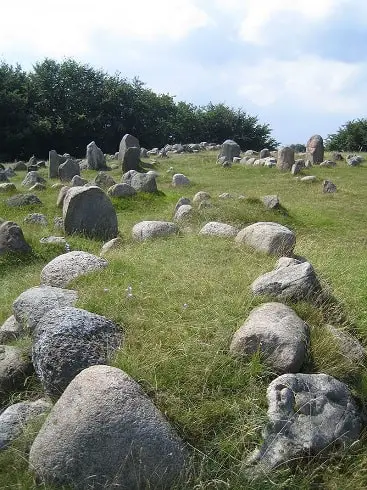
Raid laid upon English settlements included a much darker aspect of the Viking age: slavery. Archeological shreds of evidence signified when people were held captive and sold as enslaved people.
“Thralls,” as they were called in old Norse script, slavery was also contemplated as one of the reasons behind the Viking occupation of England.
Around 10 percent of the total Viking population was made up of enslaved people.
Enslaved people were sold to Islamic markets in exchange for wealth since Vikings could go to any extent for money. Human trafficking, exploitation, and sales had always been a strong pillar of Viking culture.
The Vikings kept the captives in narrow houses with minimal food, resulting in malnourished deaths. On top of it, such people could neither inherit anything nor get paid; hence it was sure they could never be released.
In a journal “Slavery and Abolition,” archeologists found the places suspected of possible slave hubs in Dublin, Hedeby, and Birka with a collection of iron shackles and collars.
Those objects were used for restraining humans in concentration centers of thralls.
The Vikings treated enslaved people brutally and called them bastards, stinkers, and sluggards. Upon death, enslaved people were left out in the open so birds and dogs could feed on them.
The decapitated bodies found nearby Viking tombs were not related to those bodies inside the tomb.
As per Elise Naumann, an archeologist, such bodies were indications of human sacrifices made at the death of masters.
The evacuated bones revealed malnutrition with a diet only based on fish while the masters enjoyed lavish meals.
4. Need of Women
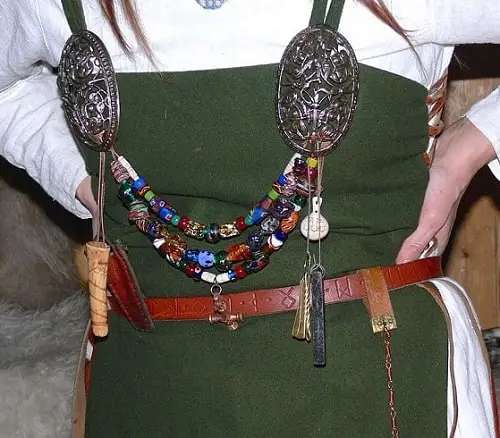
The Viking population grew boundlessly, creating a scarcity of women to start conjugal lives. Polygamy was a prevalent practice when men of higher status had several wives.
Women played active roles in managing the household, children, and domestic sphere while the men went for trades.
Women were even buried with rings of keys that symbolized their power in the home. They were said to have experienced a higher degree of freedom.
Contrary to popular myths, researchers suggested that the selective killing of female infants brought women shortage in the Viking age.
As per “Sagas of Icelanders,” polygamy and concubinage were allowed in the era. Multiple women were married to the same man; hence eligible women for bachelor Viking men were limited.
The Vikings who went on raids were mainly men, so historians deduced that they looked out for females. Raiders also targeted females for sexual slavery.
They wanted to have vast and robust warrior troops to achieve the motive marriage was a must. Evidence shows that Nordic men had children with women taken in raids from England.
3. Opportunities for trade
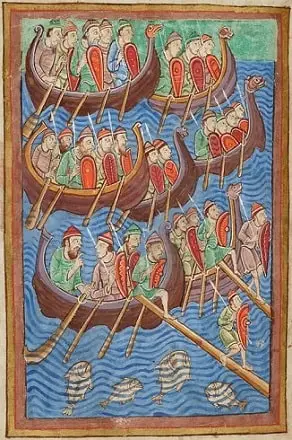
Trade was one of the significant economic aspects of the Norsemen. They were excellent ship makers having an easy grip on the water traveling.
The Heathen made the ships out of timber, overlapped and nailed oaks. They used wool, animal hairs, and mosses to fill the spaces between planks so that their lightweight longships could float well.
Cargo vessels were used more often for trading due to their width to carry goods and possessions. They traveled around European coasts to trade goods prepared back home.
Whalebones, animal furs, skins, and walrus of ivory were vital trade items.
Similarly, fossilized resins amber that was cut to make beads, brooches, and pendants were also imported.
In exchange for silk, spices, wine, glass, and jewelry, they exported honey, tin, wool, fish, etc. Blacksmiths and skilled armor makers made battle axes, swords, and chainmail made in Scandinavia were traded.
England had important towns that could prosper trading, and the Vikings might have laid an eye on it for expanding their commerce.
2. Encouraged by previous raids
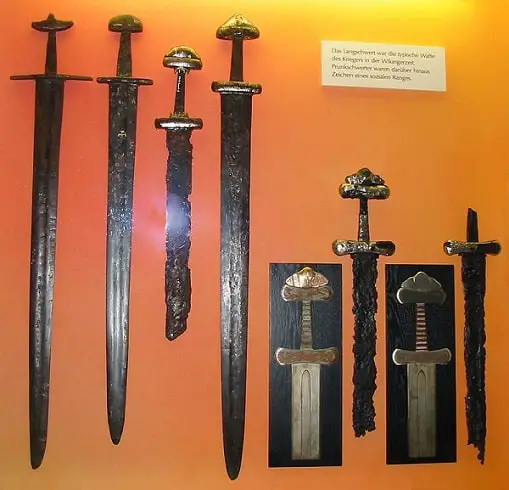
The Norsemen attacked England primarily with the sole motive of acquiring its wealth. The fortune, fame, and glory of England motivated them.
The Viking’s raids were brisk yet brutal. They would incinerate the entire settlement leaving behind a trail of devastation.
They poured out bloodshed trampling the bodies of saints, nuns, and civilians during the raids.
The terrible attacks left ancient rulers in terror to pay protection money to the Vikings hoping that ravages did not befall them.
Danegeld was paid off to the Vikings in silvers to stop raiding and go away.
Conversely, this idea attracted Viking raids even more. They had enormous greed for wealth and were inspired by the defense money they would receive as preservation money, and they invaded England.
1. Desire to establish an empire
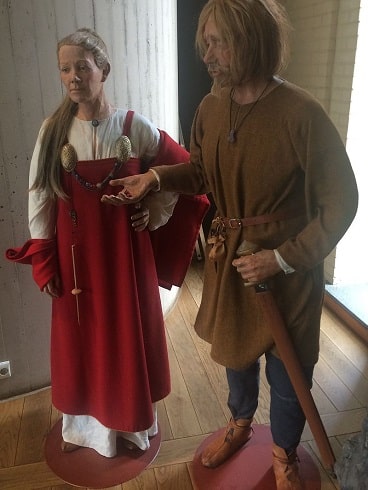
Initially, the Vikings laid raids just for the sake of luxuries, but later on, it became a yearning to establish its empire. The Vikings had colonized and based their earldoms in Europe and North America.
They had a tribal mindset that was reluctant to adopt a king. Though they never accepted coherence, it cannot be denied that they had made dominions.
The essential purpose of raising an empire was to enjoy unlimited access to the wealth and grandeur of England.
With entire England under their regime, they would grow as the strongest.
England was divided into numerous kingdoms such as East Anglia, Mercia, Northumbria, and Wessex.
They had a motive to conquer England and convert it into a Viking kingdom. East Anglia, Northumbria, and Mercia were successfully invaded, but Wessex, led by King Alfred the Great, defeated the Vikings.
The utmost desire of Vikings to vanquish England ended after the battle of Hastings that pushed them out of England.
Why did the Vikings invade England in 1066?
The last Viking invasion of England was in 1066, after the battle of Hastings. After the death of the English emperor Edward, the confessor, Harald Hardrada, king of Norway, led an invasion of England in 1066.
Harold Godwinson beat off Harald, and most of Harald’s men died in the battle. But William of Normandy, who belonged to the Viking clan, clashed with English king Harold in the battle of Hastings.
Harold was exhausted due to the simultaneous fights with Harald and William, so he could not resist the Normans.
The death of Harold led to a successful attack by a Viking king William(French), in England in 1066.
Conclusion
One of the crucial ages of medieval Europe terminated as European nations grew much more substantial than ever.
Catholicism also flourished when the Vikings turned Christians, and Christianity forbade raids and slavery on each other.
The Vikings cannot be regarded as good or bad since whatever they did was the demand of that time.
They lived in an era where violence, wars, and colonization were idealistic. But one thing they did well was advancement in the art of shipbuilding techniques.
The reputations of Vikings changed from barbaric warriors to noble savages with supercilious culture and fearless combatants.
